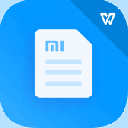








Best Arduino Projects

Beschreibung von Best Arduino Projects
Arduino is an open-source prototyping platform based on easy-to-use hardware and software. Arduino boards are able to read inputs - light on a sensor, a finger on a button, or a Twitter message - and turn it into an output - activating a motor, turning on an LED, publishing something online. You can tell your board what to do by sending a set of instructions to the microcontroller on the board. To do so you use the Arduino programming language (based on Wiring), and the Arduino Software (IDE), based on Processing.
That actually says it all.
You can find the complete introduction here.
Maybe a little more information about the board:
The Arduino Board itself is a blue circuit board, the size of a credit card (but they also have models in other sizes). It has two rows of connectors (the 'headers'), a power connector and a USB connector. The brain of the board is an Atmel microcontroller. It's like a really small, very low power 'computer'. (It only has 32KB of storage, 2KB of RAM, and the 8-bit processor runs at only 16MHz.) For most applications, however, this is more than enough. The pins of the processor connect to the headers, and you can connect them to virtually anything you can imagine. You just need to write some lines of code to control them. The I/O pins (Input/Output) can be used as input pins, to connect buttons or knobs, temperature sensors, light sensors, or even keyboards and mouses, digital musical instruments … or they can be used as output pins, to connect LEDs, drive motors, control the lights in your home, connect to small displays or even connect to the Internet, so that it can check your mail, post tweets ... Through the USB connection you can also use it to control your computer, or use your computer to control the Arduino.
As you can see, the sky's pretty much the limit !
Arduino is a popular open-source development board for engineers and makers to develop electronics projects in an easy way. It consists of both a physical programmable development board (based on AVR series of microcontrollers) and a piece of software or IDE which runs on your computer and used to write and upload the code to the microcontroller board.
Explore below some interesting arduino projects and tutorials based on different types of arduino baords like Arduino Uno, Arduino Pro Mini, etc. These DIY arduino projects for beginners are explained well and you can find the complete guide to DIY these projects with the help of circuit diagrams, source codes and videos. You can also browse below pages to get new arduino project ideas.
Arduino ist eine Open-Source-Prototyping-Plattform auf Basis von einfach zu bedienende Hard- und Software. Arduino-Boards sind in der Lage Eingänge zu lesen - Licht auf einem Sensor, einen Finger auf einem Knopf oder eine Twitter-Nachricht - und es in einen Ausgang drehen - einen Motor zu aktivieren, auf einer LED drehen, online etwas zu veröffentlichen. Sie können Ihr Board sagen, was durch das Senden einer Reihe von Anweisungen an den Mikrocontroller auf dem Brett zu tun. Um dies zu tun verwenden Sie die Arduino-Programmiersprache (basierend auf Wiring) und die Arduino Software (IDE), basierend auf Verarbeitung.
Das sagt eigentlich alles.
Sie können hier die vollständige Einführung finden.
Vielleicht ein wenig mehr Informationen über das Board:
Die Arduino-Board selbst ist eine blaue Leiterplatte, von der Größe einer Kreditkarte (aber sie haben auch Modelle in anderen Größen). Es verfügt über zwei Reihen von Steckverbindern (die ‚Header‘), einen Stromanschluss und einen USB-Anschluss. Das Gehirn der Karte ist ein Atmel-Mikrocontroller. Es ist wie ein wirklich klein, sehr geringe Leistung ‚Computer‘. (Es hat nur 32 KB Speicher, 2 KByte RAM und der 8-Bit-Prozessor ist mit nur 16 MHz.) Für die meisten Anwendungen jedoch ist dies mehr als genug. Die Pins des Prozessors an den Headern verbinden, und man kann sie sich vorstellen können, um praktisch alles verbinden. Sie müssen nur ein paar Zeilen Code zu schreiben, sie zu kontrollieren. Der I / O-Pins (Input / Output) kann als Eingang-Pins verwendet werden, zu verbinden, Tasten oder Knöpfe, Temperatursensoren, Lichtsensoren oder auch Tastaturen und Mäuse, digitale Musikinstrumente ... oder sie können als Ausgangsstifte verwendet werden, zu verbinden, LEDs, Antriebsmotoren, die Lichter in Ihrem Hause steuern, zu kleinen Displays verbinden oder sogar mit dem Internet verbinden, so dass es Ihre E-Mail überprüfen, Post Tweets ... über den USB-Anschluss Sie es auch Ihren Computer steuern können, oder nutzen Sie Ihren Computer mit dem Arduino zu steuern.
Wie können Sie den Himmel ist so ziemlich die Grenze sehen,!
Arduino ist eine beliebte Open-Source-Entwicklungs-Board für Ingenieure und Entscheidungsträger Elektronik Projekte auf einfache Art und Weise zu entwickeln. Es besteht sowohl aus einer physikalischen programmierbaren Entwicklungs-Board (basierend auf AVR Mikrocontroller Serie) und ein Stück Software oder IDE, die auf Ihrem Computer ausgeführt und verwendet, um zu schreiben und den Code an die Mikrocontroller-Board zu.
Sehen Sie sich unten einige interessante Arduino Projekte und Tutorials auf der Grundlage verschiedener Arten von Arduino baords wie Arduino Uno, Arduino Pro Mini usw. Diese DIY Arduino Projekte für Anfänger gut erklärt und Sie können die vollständige Anleitung finden diese Projekte mit Hilfe der Schaltung DIY Diagramme, Quellcodes und Videos. Sie können auch unten Seiten blättern, um neue Arduino Projektideen zu erhalten.
Arduino is an open-source prototyping platform based on easy-to-use hardware and software. Arduino boards are able to read inputs - light on a sensor, a finger on a button, or a Twitter message - and turn it into an output - activating a motor, turning on an LED, publishing something online. You can tell your board what to do by sending a set of instructions to the microcontroller on the board. To do so you use the Arduino programming language (based on Wiring), and the Arduino Software (IDE), based on Processing.
That actually says it all.
You can find the complete introduction here.
Maybe a little more information about the board:
The Arduino Board itself is a blue circuit board, the size of a credit card (but they also have models in other sizes). It has two rows of connectors (the 'headers'), a power connector and a USB connector. The brain of the board is an Atmel microcontroller. It's like a really small, very low power 'computer'. (It only has 32KB of storage, 2KB of RAM, and the 8-bit processor runs at only 16MHz.) For most applications, however, this is more than enough. The pins of the processor connect to the headers, and you can connect them to virtually anything you can imagine. You just need to write some lines of code to control them. The I/O pins (Input/Output) can be used as input pins, to connect buttons or knobs, temperature sensors, light sensors, or even keyboards and mouses, digital musical instruments … or they can be used as output pins, to connect LEDs, drive motors, control the lights in your home, connect to small displays or even connect to the Internet, so that it can check your mail, post tweets ... Through the USB connection you can also use it to control your computer, or use your computer to control the Arduino.
As you can see, the sky's pretty much the limit !
Arduino is a popular open-source development board for engineers and makers to develop electronics projects in an easy way. It consists of both a physical programmable development board (based on AVR series of microcontrollers) and a piece of software or IDE which runs on your computer and used to write and upload the code to the microcontroller board.
Explore below some interesting arduino projects and tutorials based on different types of arduino baords like Arduino Uno, Arduino Pro Mini, etc. These DIY arduino projects for beginners are explained well and you can find the complete guide to DIY these projects with the help of circuit diagrams, source codes and videos. You can also browse below pages to get new arduino project ideas.


























